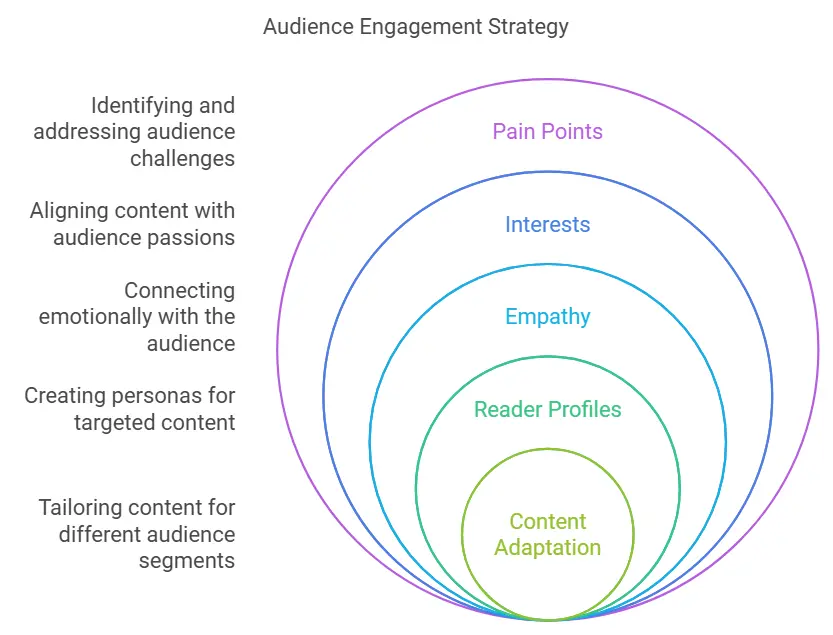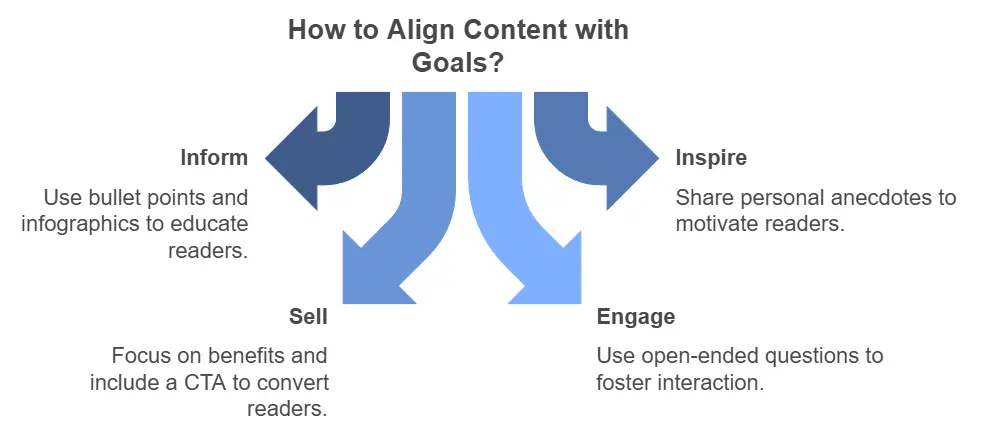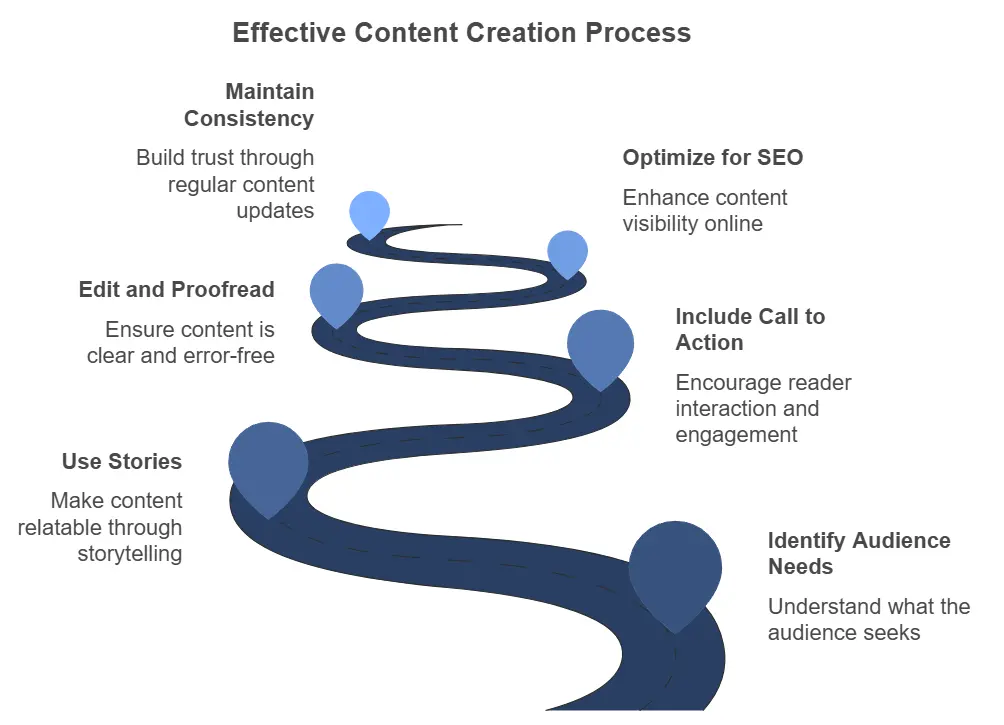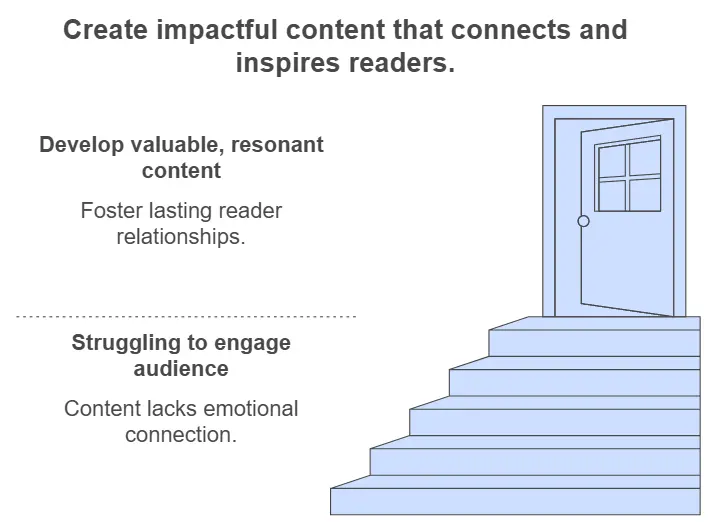Write Effective Content is both an art and a skill, a perfect balance between creativity and strategy that enables you to connect deeply with your audience. It is also about communication—sharing ideas, solving problems, and inspiring action. Compelling content can inform, entertain, persuade, and build trust, whether creating a blog post, crafting a persuasive email, or designing a social media update.
Mastering the basics of content writing isn’t just a skill for writers; it’s necessary in today’s digital world. Businesses use content to attract customers, educators use it to teach, and individuals use it to share their stories and expertise. The best content grabs attention, keeps readers engaged, and delivers meaningful value.

However, creating content that stands out in information requires more than good grammar and catchy phrases. It requires understanding your audience, having a clear purpose, and delivering your message in a way that resonates with readers. From crafting an irresistible title to structuring your ideas in a way that flows naturally, content writing involves a mix of creativity, strategy, and careful execution.
This comprehensive guide will take you through the essential steps to becoming a skilled content writer. It doesn’t matter if you’re starting or looking to refine your skills—these principles will help you create content that leaves a lasting impression. By the end of this guide, you’ll know how to grab attention, maintain it, and inspire your audience to take action.
So, whether you’re writing a product description that convinces someone to buy, a blog that educates your readers, or a social media post that encourages engagement, this guide will equip you with the tools to succeed. Let’s dive in and explore the art and science of effective content writing!
How to Understand Your Audience: Write Effective Content
Understanding your audience is the foundation of effective content writing. Before putting pen to paper (or fingers to keyboard), take the time to research and truly understand who you’re writing for. When you know your audience’s needs, preferences, and challenges, you can create content that speaks directly to them, making your message more impactful and meaningful.

a. Analyze Demographics
Demographics refer to the essential characteristics of your audience.
These include:
Age: Are they children, teenagers, young adults, or seniors? A younger audience might prefer fun, casual language, while a professional or older audience might value a more formal tone.
Occupation: What do they do for a living? Are they students, professionals, or retirees? Understanding this helps you write content that aligns with their daily experiences.
Location: Where are they from? Geography can influence language, examples, and cultural references. For example, U.S.-based audiences might relate to content about Thanksgiving traditions, while an international audience might find that irrelevant.
Why Demographics Matter:
Demographics help you tailor your tone, style, and even the examples you use in your content. If you’re writing for tech-savvy millennials, use trending phrases, memes, or digital examples. On the other hand, if your audience includes corporate professionals, you might focus on polished language and business-centric insights.
b. Identify Pain Points
Pain points are the challenges, frustrations, or problems your audience faces. Good content often solves these pain points, making your writing more valuable and engaging.
How to Discover Pain Points:
Surveys and Polls: Directly ask your audience what challenges they face.
Online Communities: Explore forums, social media groups, or comment sections to see what topics or problems they discuss frequently.
Competitor Research: Check similar content and identify which problems they’re addressing successfully.
Example of Addressing Pain Points:
If your audience is small business owners, their pain points include managing finances, gaining new customers, or navigating digital marketing. Content like “5 Easy Ways to Market Your Small Business on a Budget” addresses these challenges and provides actionable solutions.
c. Explore Their Interests
Understanding what excites or inspires your audience helps you connect with them on a deeper level. People are naturally drawn to content that aligns with their hobbies, goals, and aspirations.
How to Uncover Interests:
Look at your audience’s online engagement, such as shared articles, videos, or trending hashtags.
Use tools like Google Trends or keyword research platforms to discover popular topics in your niche.
Check your website’s or social media analytics to see what content performs well.
Examples of Tailored Content:
If your audience enjoys fitness, create content like “10 Quick Workouts for Busy Moms.”
For an audience passionate about travel, write “How to Save Money on Your Next Vacation.”
Do do this you use Affpilot AI writing tool.
d. Use Empathy to Connect
Empathy allows you to step into your audience’s shoes and write content that resonates emotionally. People want to feel understood, and empathetic writing builds trust and loyalty.
How to Use Empathy:
Acknowledge their struggles: Start by saying, “We know how overwhelming it can be when…”
Offer encouragement: Include phrases like, “You’re not alone,” or “Here’s how others have succeeded.”
Use a warm, conversational tone to create a sense of connection.
Example for New Parents:
If your audience is new parents, empathize with their exhaustion and concerns. Instead of saying, “Babies need a sleep schedule,” write: “We know how tough those sleepless nights can be. Here are simple ways to help your baby—and you—get more rest.” This shows you understand their challenges while providing helpful advice.
e. Create Reader Profiles
Reader profiles, also known as audience personas, are fictional representations of your ideal readers. These profiles include age, job, interests, and pain points. They help you visualize who you’re writing for and make your content more targeted.
Example of a Reader Profile:
Name: Sarah, the New Mom
Age: 29
Occupation: Marketing Professional
Pain Points: Struggling with sleep schedules for her baby and balancing work and motherhood.
Interests: Quick, actionable parenting tips and relatable stories from other moms.
When you write content like “10 Quick Bedtime Tips for Exhausted Moms,” you can imagine Sarah reading it and ensuring it’s tailored to her needs.
f. Adapt Content to Fit Different Audiences
If you have multiple types of readers, create content that works for each group or adapt a single piece to fit different audience segments.
Example of Adaptation:
Topic: “Saving Money on Groceries”
For college students: Focus on budget-friendly meal ideas, like “How to Save Money on Groceries Without Sacrificing Ramen.”
For parents: Emphasize family-oriented tips, such as “Feeding Your Family on a Budget: 7 Grocery Hacks.”
For professionals: Highlight convenience, like “Save Money and Time with These 10 Grocery Shopping Tips.”
Set a Clear Purpose
Every piece of content you create should start with a clear goal in mind. Defining the purpose of your content not only helps you stay focused but ensures it resonates with your target audience. With a clear objective, your writing can become more concentrated, making it easier to engage readers effectively.
Ask Yourself: What Do I Want to Achieve?
Before you start writing, take a moment to reflect on the specific outcome you want your content to achieve. Here are some common goals to consider:
Are you informing or educating?
Do you want to share knowledge, explain complex concepts, or guide your audience through a process? Educational content is perfect for establishing authority and building trust.
Are you entertaining or inspiring?
If your goal is to captivate your readers, adding humor, anecdotes, or uplifting stories can create a more enjoyable experience that keeps them returning for more.
Are you persuading or selling?
Persuasive content often highlights benefits, addresses pain points, and provides a clear call-to-action (CTA) to encourage readers to take the next step.
Table: Goals and How to Write for Them
| Goal | How to Write | Example Title |
| Teach | Use simple steps, examples, and clear explanations. | “5 Steps to Master Public Speaking” |
| Entertain | Add humor, personal stories, or interesting facts. | “10 Funniest Mistakes We All Make” |
| Inspire | Share motivational quotes, success stories, or aspirations. | “How I Overcame My Fears to Succeed” |
| Persuade | Highlight benefits, use emotional appeal, and include a CTA. | “Why This App Will Change Your Life” |
| Engage | Ask questions, use polls, and encourage comments. | “What’s Your Productivity Hack?” |
| Sell | Showcase features, benefits, and user testimonials. | “Top 3 Tools Every Marketer Needs Today” |
Tailor Your Writing Style:
Writing for education requires clarity and simplicity, while entertaining content benefits from creativity and humor. Knowing your goal can help you adapt your tone, format, and structure accordingly.
Engage the Right Audience:
Different goals attract different types of readers. For instance, a guide to financial planning will appeal to knowledge seekers, while a humorous blog post may attract readers looking for entertainment.
Deliver Tangible Value:
Readers appreciate content that fulfills a specific need. Purposeful content keeps them satisfied whether it solves a problem, answers a question, or makes them laugh.
Drive Desired Actions:
Persuasive or sales-focused content often requires a strategic approach to influencing readers to take action—whether it’s subscribing to a newsletter, downloading a resource, or purchasing.
How to Align Content with Goals
To create goal-oriented content, follow these tips:
Start with the End in Mind:
Visualize what success looks like for your content. For example, if your goal is to generate leads, include CTAs like “Sign up now” or “Download our free guide.”
Research Your Audience:
Understand their needs, preferences, and problems. If they’re looking for inspiration, share personal stories or case studies. If they want solutions, offer actionable advice.
Use the Right Format:
Educational content works well as step-by-step guides or tutorials. Entertaining content often performs best as listicles, stories, or videos.
Stay Consistent with Your Goal:
Avoid overloading your content with multiple objectives. If you aim to teach, don’t distract readers with overly persuasive or sales language.
Example Scenarios of Clear Purposes
Inform:
Goal: Educate readers on a specific topic.
Approach: Use bullet points, infographics, and real-life examples.
Example: “Understanding Cryptocurrency: A Beginner’s Guide”
Inspire:
Goal: Motivate readers to take action or adopt a positive mindset.
Approach: Share personal anecdotes or highlight success stories.
Example: “From Failure to Success: My Journey as an Entrepreneur”
Sell:
Goal: Convert readers into customers.
Approach: Focus on benefits, use testimonials, and include a CTA.
Example: “Why Our Product Will Save You Time and Money”
Engage:
Goal: Foster interaction with your audience.
Approach: Use open-ended questions or polls.
Example: “What’s Your Best Tip for Staying Productive?”

Craft a Catchy Title
Your title is the first thing readers see. A strong title grabs attention and encourages people to click or keep reading.
Tips for Writing a Catchy Title:
- Use numbers: “7 Simple Habits for a Healthier Life.”
- Ask a question: “Are You Making These Writing Mistakes?”
- Promise a benefit: “Learn How to Double Your Productivity Today.”
Example:
Instead of writing “Writing Tips,” try “10 Writing Tricks to Make Your Content Stand Out.”
Write an Engaging Introduction
Your introduction sets the tone for your article. It should grab attention and explain why the content is worth reading.
How to Start:
- Ask: “Do you struggle with staying focused while writing?”
- Share a surprising fact: “Most people only spend 15 seconds reading a webpage.”
- Tell a short story: “Last year, I almost gave up on blogging, but one strategy turned everything around.”
Organize Your Content for Easy Reading
Most online readers skim rather than read. Well-organized content is more likely to keep them engaged.
Best Practices for Organizing Content:
Use headings and subheadings: Divide your content into sections.
Write short paragraphs: Keep them 2-4 sentences long.
Use lists or bullet points: Highlight key points.
Example of Poor Organization: “Learning time management is important. You need to plan your day, use a calendar, and avoid distractions. Try setting timers, and don’t forget to take breaks.”
Example of Good Organization:
- Why Time Management Matters
- Steps to Manage Your Time:
- Plan your day with a calendar.
- Set timers for focused work.
- Take regular breaks.
Add Real Value with Practical Tips
Good content solves problems or teaches helpful something. Always ask, “What can my readers do with this information?”
How to Add Value:
Share actionable tips: “Drink water first thing in the morning to boost hydration.”
Provide examples: Show how others have applied your ideas.
Use data: “Studies show that content with images gets 94% more views.”
Example:
If you’re writing about saving money, don’t just say, “Spend less.” Instead, suggest:
- “Cook at home instead of eating out.”
- “Cancel unused subscriptions.”
- “Shop during sales to save more.”
Use Simple and Clear Language
Complicated language can confuse readers. Always write in a way that’s easy to understand.
Tips for Simple Writing:
- Use everyday words instead of jargon.
- Keep sentences short and precise.
- Avoid long paragraphs.
Example:
Instead of: “Commence the implementation of the proposed strategies,”
Write: “Start using these strategies now.”
Incorporate Visuals and Media
Adding visuals like pictures, videos, or charts can make your content more engaging and easier to understand.
When to Use Visuals:
To break down complex steps, Add diagrams or photos.
To show data: Use graphs or infographics.
To add personality: Include relevant images or GIFs.
Example:
If you’re teaching how to decorate a cake, include step-by-step pictures.
- Tell Stories and Share Examples
Stories are powerful because they make your content relatable and memorable. People connect with real experiences more than abstract ideas.
How to Use Stories:
- Share your experiences: “When I started budgeting, I saved $500 in two months.”
- Tell a story about someone else: “A small business owner increased their sales by 30% using this method.”
- Use analogies: “Think of SEO like planting seeds—it takes time, but the results grow over time.”
Include a Strong Call to Action (CTA)
Every piece of content should guide readers on what to do next. A Call to Action (CTA) encourages them to engage further.
Examples of CTAs:
- “Download our free guide to learn more.”
- “Try these tips today and let us know how they work.”
- “Leave a comment with your thoughts!”
Edit and Proofread Your Work
Great content is polished and error-free. Editing ensures clarity and professionalism.
Editing Tips:
- Check grammar and spelling mistakes.
- Simplify long or confusing sentences.
- Read your content aloud to check the flow.
- Tools to Use: Grammarly, Hemingway Editor.
Optimize Content for SEO (if online)
SEO (Search Engine Optimization) makes your content easier to find online.
SEO Checklist:
Use relevant keywords: Add them to your title, headings, and content.
Write a meta description: Summarize your content in 1-2 sentences.
- Add internal and external links: Link to related content on your site and credible sources.
Example: - If your topic is “healthy snacks,” use keywords like “easy healthy snacks” or “snack ideas for weight loss.”
Stay Consistent and Engaging
Consistency builds trust with your audience. Stick to a schedule, whether you post weekly, bi-weekly, or monthly.
How to Stay Consistent:
Consistency is the backbone of effective content creation. It’s crucial to produce high-quality content regularly. However, staying consistent can only be challenging with proper planning and motivation. Here are some detailed strategies to help you stay on track:

Create a Content Calendar:
A content calendar is an essential tool for staying organized and consistent. It allows you to plan topics, set deadlines, and maintain a steady flow of content. Use tools like Google Calendar, Trello, or Notion to schedule your topics for weeks or months in advance. Include publishing dates, specific themes, or promotional campaigns to ensure you’re always prepared.
- Set Small Writing Goals:
Breaking your writing tasks into smaller, manageable goals makes the process less overwhelming. For instance, aim to write 500 words daily or complete one blog post every week. Small, achievable targets build momentum and help you stay motivated over time. Over time, these small efforts compound into significant results.
- Batch Create Content:
If daily content creation feels daunting, try batching your tasks. Dedicate a specific day or time each week to brainstorm ideas, outline multiple topics, or write several pieces simultaneously. This method saves time and ensures you always have content ready for publication.
- Experiment with Styles and Formats:
Keeping your content fresh and exciting is crucial for you and your audience. Experiment with various formats like blogs, social media posts, videos, infographics, and newsletters. Change your tone or approach occasionally—write a humorous article, an in-depth guide, or a listicle. This variety keeps your creativity flowing and helps you discover what resonates most with your audience.
- Evolve as a Content Creator:
Content creation is a continuous journey of learning, adapting, and improving. The more you write and create, the better you understand your audience, refine your voice, and produce impactful content. Here’s how you can evolve and enhance your skills:
- Read Extensively:
Reading is one of the best ways to become a better writer. Explore books on writing techniques, content marketing, and storytelling. Dive into industry leaders’ blogs, articles, or essays to understand different perspectives and styles. The more you expose yourself to diverse content, the more inspiration you’ll find for your work.
- Take Courses and Tutorials:
Invest in your skills by enrolling in online courses or watching Coursera, Udemy, or YouTube tutorials. Look for topics like copywriting, SEO, storytelling, and email marketing. These resources provide actionable tips and frameworks to apply immediately to your content.
- Practice Different Writing Styles:
Step out of your comfort zone and experiment with various writing styles to grow as a content creator. Write blog posts, email campaigns, video scripts, social media captions, and long-form essays. Each type of writing has nuances; mastering them will make you a versatile and adaptable creator.
- Analyze Your Work:
Consistently review and analyze your content to identify what works and what doesn’t. Use analytics tools to track metrics like engagement, click-through, and conversions. Identify patterns in your most successful posts and apply those insights to future projects.
- Seek Feedback:
Feedback from peers, mentors, or your audience is invaluable. Share your work with trusted colleagues or friends and ask for constructive criticism. Engage with your audience to understand their preferences and incorporate suggestions into your content strategy.
- Stay Updated with Trends:
The digital landscape is ever-changing, and staying relevant requires keeping up with trends. Follow industry blogs, listen to podcasts, or join webinars to stay informed about new tools, algorithms, and strategies. Applying current trends will improve your content and position you as an authority in your niche.
- Celebrate Progress:
Acknowledge your growth as a content creator. Celebrate milestones, whether completing your first series of articles, reaching a word count goal, or publishing a challenging piece. Recognizing your Progress motivates you to keep improving and striving for excellence.
By staying consistent and continuously evolving, you’ll improve as a writer and create content that truly resonates with your audience. Remember, content creation is a journey, not a destination—embrace the process, stay curious, and keep learning.
Conclusion
Effective content writing isn’t just about putting words on a page—it’s about creating a meaningful connection with your readers, addressing their needs, and motivating them to take action. The best content informs, engages, and resonates emotionally, leaving a lasting impression. When you focus on solving problems, answering questions, or providing insights, your content becomes a trusted resource to which readers keep coming back.

By following these steps, you’ll develop engaging, valuable, and impactful content. It’s not about perfection from the start but about improving with every piece you write. Your unique perspective, thoughtful research, and clear communication will differentiate your content.
So, why wait? Start today! Pick a topic that excites you or addresses a common pain point for your audience. Outline your ideas to create a structured flow, and watch your writing transform into something that readers will enjoy, share, and appreciate. The journey to becoming a skilled content creator begins with that first step—with consistency and effort, the possibilities are limitless. Keep creating, keep improving, and let your words inspire the world!




